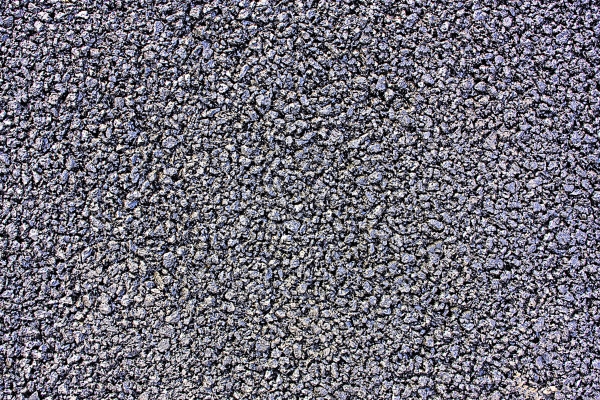Pervious Pavement
Video
alt="" ASUsmart(As previously published in Modern Contractor Solutions.) Pervious pavement is a green, sustainable strategy that can assist in lowering stormwater runoff, naturally decreasing automobile pollutants, recharging the water table supply and moderating the heat island effect. Similar to other complex construction systems, in order for the sustainable pavement to perform as it was designed, it needs to be installed with precision and maintained with diligence. To drain water effectively on any given site, different geographical areas require special adjustments to the technology as well.

Intuitively, the terminology of pervious pavement indicates both of what materials it is composed as well as how it performs. Rather than introducing sand to the mixture, a specialized paste adheres the aggregate in poured concrete and asphalt. By eliminating sand from traditional concrete mixtures, the pavement solidifies leaving a 15% to 25% void content. When it rains, the water literally pours through the mixture and percolates down through engineered layers of aggregate and fiber mesh to slowly infiltrate back into the soil subbase below. Most pervious paving mixtures drain rainwater at a rate of three to eight gallons per minute per square foot.
Pervious paving tends to be the most ideal for applications such as parking lots, sidewalks, tennis courts and sidewalks adjacent to swimming pools. Far easier to list, however, are the areas where pervious paving may not be an ideal application. At a maximum compressive strength of 500 – 4000psi, large and heavy vehicular traffic can not yet be supported by pervious paving. In northern, colder climates, the pavement may be damaged by snowplows that dislodge aggregate from the top surface, as well as by excessive de-icing chemicals that can degrade the special binding paste. In areas with heavy clay soil content, much larger artificial drainage layers need to be introduced to offset the clay’s inability to quickly absorb rainwater. Other precautions apply, such as preventing pervious pavement from being within 100 feet of a well, from within ten feet of a building foundation, from within close proximity to sources of contaminants and from within four feet of bedrock and the water table.
Most critical to the success of pervious paving is not that it be applied correctly or that its location be appropriate, but rather that its owners follow a specific, effective and relentless maintenance schedule. Regular vacuuming and high power washing are two critical keys to safeguarding the surface. For example, after snow piles melt, debris left behind may clog the void content. Professional designers and engineers recommend that the owner’s maintenance team be educated and selected prior to construction commencement.
Pervious pavement may take the form of poured-in-place pervious asphalt, poured-in-place pervious concrete surfaces, block and concrete modular pavers or grid pavers. There are great cost and environmental benefits to any of these forms of pervious pavement, even though the initial cost for materials and installation is increased by at least 10% to double for the pavers. The offset in costs can develop from the elimination of curbs, gutters, storm drains and large retention ponds. Depending on the project’s location, a community may reduce stormwater fees as a reward for decreasing the stormwater infrastructure for that particular site.
The environmental benefits associated with pervious paving provide a huge positive impact on several platforms. By allowing water to infiltrate through the top layers, soil below is moistened, which in turn reduces the heat factor of the pavement. By reducing the pavement’s heat, the phenomenon recognized as the “heat island effect” is greatly reduced. The heat island effect causes surrounding green environments to wilt and suffer from excessive heat, which in turn damages the natural ecosystem. More information regarding this topic can be researched through the U.S. EPA informational website. Additionally, the pervious paving also “cleans” stormwater runoff through absorption, filtration and microbiological degradation. Though the paving can largely reduce unwanted sediments, phosphorous, nitrogen, zinc and lead, fuel which leaks from automobiles is not, thus far, effectively treated. Also important, recharging the groundwater supply with cleaned water is another environmentally-friendly benefit.
Water is a precious resource that requires a great deal of innovation and protection in order to serve a growing population. As such, the U.S. EPA recognizes pervious paving as one of the Best Management Practices (BMP) for the stewardship of stormwater runoff on both a regional and local basis. Accurately understanding pervious pavement technology, installing materials properly as they were engineered for a proposed site, and establishing a continued maintenance program promotes a healthy, green and sustainable environment.
Cited Work
- “Pervious Paving” - Portland Cement Association. 21 January 2008
http://www.concretethinker.com/Papers.aspx?DocId=10 - “What Can Be Done, Heat Island Effect” - U.S. EPA. 21 January 2008
http://www.epa.gov/hiri/strategies/index.html - “Stormwater Management, Pervious Pavement” - Lake Superior Duluth Streams. 21 January 2008 http://www.duluthstreams.org/stormwater/toolkit/paving.html

Stephanie Aurora Lewis
Stephanie, an NCARB registered architect and LEED AP, draws upon her studies in architectural history and theory from Sarah Lawrence College and her master’s degree in architecture from The Ohio State University. Providing copy for publications and performing marketing work for the construction industry, Stephanie works as an independent freelancer from Columbus, Ohio.
Website: greengaloredesigner.blogspot.com/